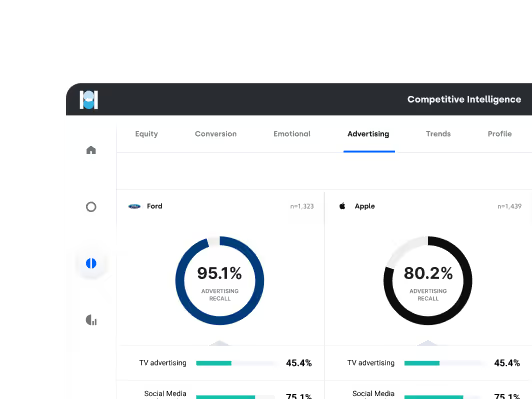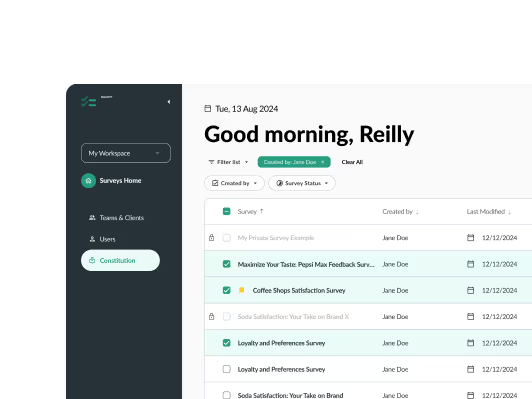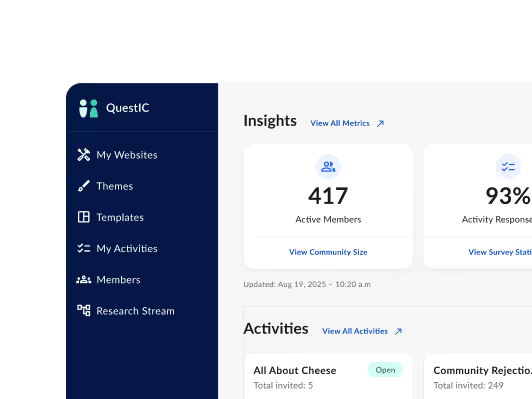Every October, brand marketers sharpen their creative knives for one of the most lucrative – and competitive – moments on the calendar: Halloween. But with candy aisles overflowing and ad campaigns flooding every screen, which brands actually stay top-of-mind, and what persuades consumers to buy?
To find out, The Harris Poll used its QuestDIY platform to survey 1,000 U.S. adults (Oct 14-20, 2025), uncovering what drives Halloween candy awareness, intent, and advertising impact.
The results show a holiday where chocolate still reigns supreme – and where creative execution, not celebrity budgets, separates the champions from the participants. See the brands that won Halloween this year based on an analysis from Smart Assets and The Marketing Cloud.
1. Chocolate dominates, but parents diversify
Awareness of Halloween candy brands is nearly universal. The top ten: Snickers, Kit Kat, M&M’s, Hershey’s, Reese’s, Twix, Milky Way, Skittles, Butterfinger, and Tootsie Roll, read like a greatest hits list of confectionery icons.
And when it comes to what Americans actually buy, chocolate wins by a landslide. Four out of five (80%) consumers who celebrate Halloween choose chocolate, climbing to 90% among those who hand out candy. The top six purchase-intent brands are all chocolate:
1. Reese’s
2. M&M’s
3. Kit Kat
4. Hershey’s
5. Snickers
6. Twix
Yet beneath the chocolate obsession lies a subtle shift. Parents and guardians are far more likely to branch out with non-chocolate options – gummy candies (+21 pts vs. non-parents), chips or salty snacks (+24 pts), and even healthy snacks (+17 pts).
The takeaway: Households with kids are hedging their bets to please every trick-or-treater, signaling white space for brands outside the chocolate core.
2. Candy buying is personal – not purely generous
Marketers love to picture parents stocking up for neighborhood kids.
Reality check: 69% of consumers (and 75% of parents) admit they buy candy for themselves – or for both themselves and the trick-or-treaters.
The top decision drivers back that up:
- Taste outranks every other factor (average rank 2.1)
- Price comes next (2.5) amid ongoing cost-of-living concerns
- Brand reputation, packaging, and advertising trail behind
The takeaway: Consumers may talk about “sharing the fun” but the real motivator is self-indulgence. For CPG and retail marketers, that means emotional, sensory positioning (“treat yourself,” “you’ve earned it”) can outperform generic family messaging.
3. Ad recall aligns with purchase intent, but creative beats celebrity
Only 13% of consumers say advertising directly drives their Halloween purchases, but half (53%) acknowledge it has some influence – and ad recall matches up closely with purchase intent. It seems that your ad doesn’t need to sell candy outright; it just needs to keep your brand top-of-mind.
What actually makes an ad memorable? Consumers are clear:
- Spooky themes (60%)
- Striking visuals (59%)
- Humor and storytelling (44%)
By contrast, celebrity endorsements (14%) barely register. Even among those who recall ads, visual design (58%) and humor (51%) stand out far more than famous faces (32%).
The takeaway: When it comes to Halloween campaigns, audiences want imagination, not influencers.
From Halloween to year-round brand momentum
Seasonal campaigns like Halloween offer a rare laboratory for brand performance. The same forces that drive a candy purchase in October – familiarity, creativity, and emotional connection – are the ones that sustain brand momentum the rest of the year.
That’s why leading marketers track these moments in real time. Using QuestBrand, teams can see whether brand perceptions, emotional drivers, or momentum scores lift after major seasonal pushes – and which creative elements actually move the needle on future growth.
For billion-dollar brands competing nationally or globally, the stakes extend beyond the holiday season. The brands that understand why people buy – not just what they buy – can translate short-term attention into long-term equity.
Top takeaway for brand leaders
Halloween may be a sugar-coated holiday, but its lessons are serious business for marketers:
- Invest in distinctive creative, not borrowed equity. Iconic visuals and storytelling outperform paid endorsements.
- Appeal to the “me moment”. Even when gifting, consumers crave personal gratification. Anchor campaigns in emotional reward.
- Track alignment between ad recall and purchase intent. High overlap means your creative is doing its job.
- Use real-time insight tools. Platforms like QuestDIY and QuestBrand help teams test, learn, and optimize before dollars are spent.
In an economy defined by tight budgets and high competition, knowing what captures consumer attention – and what converts it into action – isn’t just nice to have. It’s your competitive advantage.









.jpg)
